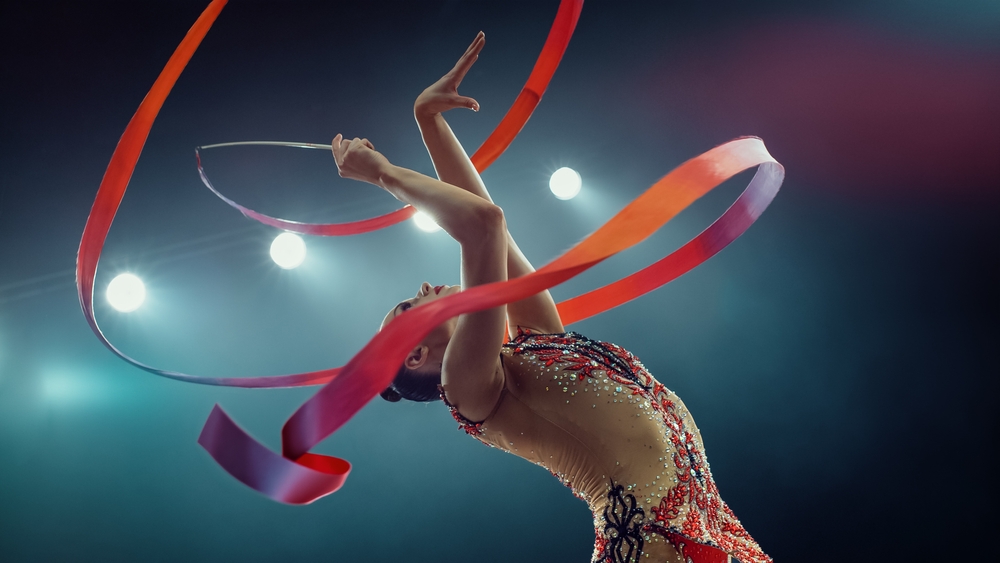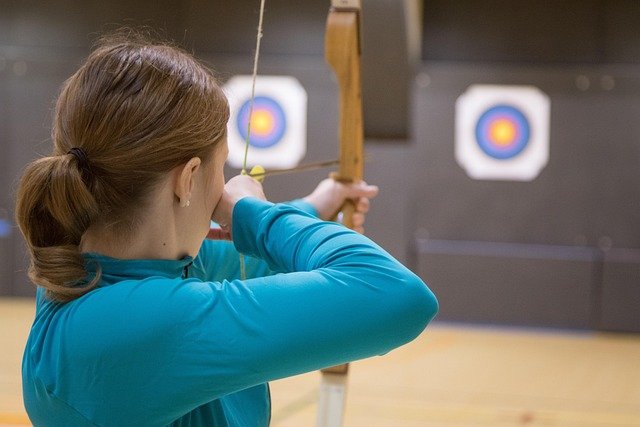Rhythmic Gymnastics: The Intersection of Art and Athletics
In the world of competitive sports, few disciplines blend artistry and athleticism quite like rhythmic gymnastics. This captivating sport combines elements of dance, ballet, and traditional gymnastics with the graceful manipulation of apparatus, creating a mesmerizing spectacle that challenges both body and mind. As rhythmic gymnastics continues to evolve and gain recognition, it offers a unique perspective on the intersection of art and sport, pushing the boundaries of human movement and expression.

The Origins of Rhythmic Gymnastics
Rhythmic gymnastics traces its roots back to the early 20th century, emerging from a combination of various movement disciplines. The sport’s foundations can be found in the work of Jean-Georges Noverre, François Delsarte, and Rudolf Bode, who explored the connection between physical movement and emotional expression. These early pioneers laid the groundwork for what would eventually become rhythmic gymnastics.
In the 1920s, the Soviet Union began developing a system of exercises that combined elements of classical ballet, modern dance, and traditional gymnastics. This new form of movement, initially called “artistic gymnastics,” gained popularity throughout Eastern Europe. As the discipline evolved, it incorporated the use of small apparatus such as balls, hoops, and ribbons, adding a new dimension to the performances.
The first official competition in rhythmic gymnastics took place in 1948 in the Soviet Union. However, it wasn’t until 1963 that the sport received international recognition when the Fédération Internationale de Gymnastique (FIG) recognized rhythmic gymnastics as an official discipline. This recognition paved the way for the sport’s inclusion in major international competitions, culminating in its Olympic debut at the 1984 Los Angeles Games.
The Unique Challenges of Rhythmic Gymnastics
Rhythmic gymnastics presents a set of challenges unlike any other sport. Athletes, known as rhythmic gymnasts, must master a complex array of skills that encompass both physical prowess and artistic expression. The sport demands exceptional flexibility, strength, balance, and coordination, combined with a keen sense of rhythm and musicality.
One of the most distinctive aspects of rhythmic gymnastics is the use of apparatus. Gymnasts perform routines with five different types of equipment: rope, hoop, ball, clubs, and ribbon. Each apparatus requires specific techniques and skills, and gymnasts must demonstrate mastery over all of them. The manipulation of these tools adds an extra layer of complexity to the performances, as gymnasts must maintain control over the apparatus while executing intricate body movements.
The artistic component of rhythmic gymnastics sets it apart from many other sports. Gymnasts must interpret music through their movements, expressing emotions and telling stories with their bodies. This requires not only physical skill but also a deep understanding of musicality and artistic expression. Judges evaluate performances based on both technical execution and artistic merit, making rhythmic gymnastics a true fusion of sport and art.
Training and Preparation for Excellence
Achieving success in rhythmic gymnastics requires a rigorous and multifaceted training regimen. Gymnasts typically begin their training at a young age, often as early as five or six years old. The path to elite-level competition is long and demanding, requiring dedication, discipline, and a willingness to push physical and mental boundaries.
A typical training schedule for a competitive rhythmic gymnast can involve up to 40 hours of practice per week. This intense regimen includes a combination of strength training, flexibility exercises, apparatus handling, and choreography practice. Gymnasts must develop and maintain exceptional levels of flexibility, particularly in the back, hips, and shoulders, to execute the complex movements required in their routines.
Strength training is also crucial, as gymnasts need to build the muscular endurance necessary to perform routines that can last up to 90 seconds at the highest levels of competition. This training often includes a mix of bodyweight exercises, plyometrics, and specialized exercises designed to target the specific muscle groups used in rhythmic gymnastics.
In addition to physical preparation, mental training plays a vital role in a gymnast’s development. The sport demands intense focus, concentration, and the ability to perform under pressure. Many gymnasts work with sports psychologists to develop mental strategies for coping with the stress of competition and maintaining consistency in their performances.
The Role of Music and Choreography
Music and choreography are integral components of rhythmic gymnastics, setting it apart from many other competitive sports. The selection of music and the creation of a routine are critical aspects of a gymnast’s preparation for competition. Coaches and choreographers work closely with gymnasts to develop routines that showcase their strengths and artistic abilities while meeting the technical requirements of the sport.
The choice of music is particularly important, as it sets the tone for the entire routine. Gymnasts and their coaches carefully select pieces that complement the athlete’s style and allow for a range of emotional expression. The music can range from classical compositions to modern pop songs, and gymnasts must demonstrate their ability to interpret and express the nuances of the chosen piece through their movements.
Choreography in rhythmic gymnastics is a complex process that involves blending technical elements with artistic expression. Routines must include a specific number of required elements, such as leaps, pivots, and balances, while also incorporating creative and original movements. The challenge lies in seamlessly integrating these technical components with the artistic aspects of the performance, creating a cohesive and engaging routine that captivates both judges and spectators.
The Evolution of Competitive Rhythmic Gymnastics
Since its inclusion in the Olympic Games, rhythmic gymnastics has undergone significant evolution. The sport has seen changes in rules, scoring systems, and the level of difficulty in routines. These changes have been driven by a desire to make the sport more objective and to encourage innovation and creativity among gymnasts.
One of the most significant changes in recent years has been the introduction of the “open-ended” scoring system in 2005. This system replaced the previous “perfect 10” scoring method and allows for a more nuanced evaluation of routines. Under the new system, scores are calculated based on two main components: Difficulty (D) and Execution (E). The Difficulty score reflects the technical content of the routine, including the complexity of elements and connections, while the Execution score evaluates the quality of performance and artistic presentation.
This change in scoring has led to a dramatic increase in the level of difficulty in elite-level routines. Gymnasts are now pushing the boundaries of what is physically possible, incorporating increasingly complex elements and combinations into their performances. This evolution has raised the bar for what is considered top-level rhythmic gymnastics, demanding ever-higher levels of skill and artistry from competitors.
Another significant development in the sport has been the introduction of group routines at the Olympic level. Group rhythmic gymnastics, which features teams of five gymnasts performing synchronized routines, was added to the Olympic program in 1996. This addition has brought a new dimension to the sport, showcasing the beauty and precision of coordinated group performances.
The Global Reach and Cultural Impact of Rhythmic Gymnastics
While rhythmic gymnastics has its roots in Eastern Europe, the sport has gained popularity worldwide over the past few decades. Countries such as Russia, Bulgaria, and Belarus have traditionally dominated international competitions, but the sport is now seeing strong contenders emerge from nations across Europe, Asia, and the Americas.
The global spread of rhythmic gymnastics has led to a diversity of styles and approaches to the sport. Different countries and regions have developed their own unique interpretations of rhythmic gymnastics, influenced by local dance traditions and cultural aesthetics. This diversity has enriched the sport, bringing new perspectives and innovations to routines and choreography.
Rhythmic gymnastics has also had a significant cultural impact beyond the competitive arena. The grace and artistry of the sport have inspired fashion designers, artists, and choreographers in other disciplines. The unique blend of athleticism and artistic expression found in rhythmic gymnastics has influenced contemporary dance, figure skating, and even circus arts.
Challenges and Controversies in Rhythmic Gymnastics
Like many competitive sports, rhythmic gymnastics has faced its share of challenges and controversies. One of the ongoing issues in the sport is the subjective nature of judging, particularly in the artistic component of routines. Despite efforts to make scoring more objective, there is still room for interpretation in evaluating the artistic merit of performances, which can sometimes lead to disputes over results.
Another challenge facing the sport is the intense physical demands placed on young athletes. The flexibility and strength required for elite-level rhythmic gymnastics often necessitate that gymnasts begin training at a very young age. This has raised concerns about the long-term physical and psychological effects of such intense training on developing bodies and minds.
The sport has also grappled with issues of body image and weight management. The emphasis on lean, flexible physiques has sometimes led to unhealthy practices among athletes striving to maintain a certain body type. In recent years, there has been a growing awareness of these issues, with efforts being made to promote healthier approaches to training and nutrition within the sport.
The Future of Rhythmic Gymnastics
As rhythmic gymnastics continues to evolve, the sport faces both challenges and opportunities. One of the key areas of focus for the future is increasing accessibility and participation at the grassroots level. While the sport has gained popularity globally, it still remains relatively niche in many countries. Efforts are being made to introduce rhythmic gymnastics programs in schools and community centers, aiming to broaden the base of participants and potentially discover new talent.
Technological advancements are also playing a role in shaping the future of rhythmic gymnastics. Video analysis tools and motion capture technology are being used to help gymnasts refine their techniques and develop new elements. These technologies also have the potential to assist judges in evaluating performances more accurately, potentially addressing some of the concerns about subjectivity in scoring.
Innovation in apparatus design is another area of potential growth for the sport. As gymnasts continue to push the boundaries of what is possible, there may be opportunities to develop new types of apparatus or modify existing ones to allow for even more creative and challenging routines.
The Enduring Appeal of Rhythmic Gymnastics
Despite the challenges it faces, rhythmic gymnastics continues to captivate audiences around the world with its unique blend of athleticism and artistry. The sport offers a spectacle unlike any other, combining the grace of dance with the precision of gymnastics and the creativity of artistic expression.
For participants, rhythmic gymnastics provides a holistic approach to physical and artistic development. It cultivates not only physical skills such as flexibility, strength, and coordination but also nurtures creativity, musicality, and emotional expression. These qualities can have benefits that extend far beyond the competitive arena, contributing to personal growth and well-being.
As a spectator sport, rhythmic gymnastics offers a visually stunning and emotionally engaging experience. The combination of graceful movement, musical interpretation, and the seemingly magical manipulation of apparatus creates performances that can be truly awe-inspiring. Whether watching a solo routine or a synchronized group performance, audiences are treated to a display of human skill and artistry that is both beautiful and athletically impressive.
Conclusion: The Artistic Athlete
Rhythmic gymnastics stands as a testament to the incredible potential of the human body and spirit. It challenges our perceptions of what is possible in physical movement and artistic expression, pushing the boundaries of both sport and art. As the discipline continues to evolve, it offers valuable insights into the intersection of athleticism and creativity, reminding us that true mastery often lies at the crossroads of diverse skills and disciplines.
The rhythmic gymnast embodies the concept of the artistic athlete – an individual who must excel not only in physical prowess but also in creative expression and emotional communication. This unique combination of skills makes rhythmic gymnastics a fascinating subject of study for sports scientists, artists, and anyone interested in the full spectrum of human performance.
As we look to the future, rhythmic gymnastics is poised to continue its evolution, inspiring new generations of athletes and artists alike. Whether as a competitive sport, a form of physical expression, or a captivating spectacle, rhythmic gymnastics will undoubtedly continue to push the boundaries of what we consider possible in the realm of human movement and artistic achievement.





